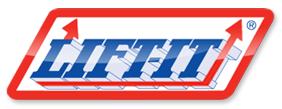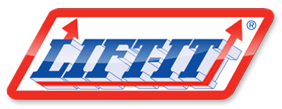|
Haul Truck Dump Body Slings must be inspected thoroughly for damage. Visual, tactile and patented inspection systems such as Check-Fast®, Fiber Optics and Tattle Tails will assist inspectors in determining sling condition. Haul Truck Dump Body Slings shall be removed from service for an evaluation by the manufacturer if any of the following conditions are detected:
- Check-Fast® Early Warning Indicator (EWI) and Tattle Tail indicators shall extend past the sling tag area. If slings are equipped with Check-Fast® and the EWI is not visible or both Tattle Tails are not visible, remove the sling from service and return to the manufacturer for repair evaluation.
- If Haul Truck Dump Body Slings are equipped with the Fiber-Optic Inspection option, inspect by allowing light to enter the fiber optics. If fiber optics does not transmit light from end to end, remove the sling from service and return for repair evaluation.
- If Haul Truck Dump Body Sling tags are missing or illegible, slings shall not be used and be returned for repair evaluation.
- Inspect for evidence of heat damage, i.e., melting, charring or weld spatter. Haul Truck Dump Body Slings with K-Spec® core yarn shall not be exposed to temperatures above 180°F/ 82°C or below -40°F/- 40°C.
- If any part of the Haul Truck Dump Body Sling is stiff or brittle, indicating heat or chemical damage, remove the sling from service. Return the sling to the manufacturer for repair evaluation.
- Haul Truck Dump Body Slings shall be examined throughout their length for damage such as: holes, tears, cuts, embedded materials, abrasive wear or snags that expose the core yarn. If damage is detected, slings shall be removed from service for repair evaluation.
- Damage to the cover may indicate a loss of core yarn strength. Slings with signs of cover damage shall not be used until evaluated by the manufacturer.
- If core yarns are broken, cut or damaged, slings must be removed from service. If broken stitching in the cover exposes core yarn, slings must be removed from service for repair evaluation.
- Haul Truck Dump Body Slings and attached fittings shall be regularly inspected. In addition to the initial inspection and periodic inspections done by designated, competent inspectors, slings shall be visually inspected before each use.
- Fittings determined to be elongated, damaged, corroded or not AMSE B30.10 and/or ASME B30.26 compliant shall be removed from service for repair evaluation.
- Haul Truck Dump Body Slings that are tied in knots or joined by knotting shall not be used until evaluated by the manufacturer.
- Inspections shall be performed as required by competent persons and inspection documentation shall be maintained. Inspections may be done more often based on: frequency of use, severity of conditions or experience gained on the service life of slings used in similar circumstances. Periodic inspection intervals must not exceed 1 Year
- Haul Truck Dump Body Slings removed from service that are not repairable shall be destroyed and rendered completely unfit for any future use.
 Failure to follow proper use, care and inspection criteria could result in severe personal injury or death. It is your explicit responsibility to consider all risk factors prior to using any rigging device or product. Read and understand the information contained in this publication and follow MSHA, OSHA and ASME guidelines. Use by untrained persons is hazardous. Synthetic products will fail if damaged, abused, misused, overused or improperly maintained. Failure to follow proper use, care and inspection criteria could result in severe personal injury or death. It is your explicit responsibility to consider all risk factors prior to using any rigging device or product. Read and understand the information contained in this publication and follow MSHA, OSHA and ASME guidelines. Use by untrained persons is hazardous. Synthetic products will fail if damaged, abused, misused, overused or improperly maintained.
Do not exceed Work Load Limits. You are cautioned that all published Work Load Limits and break strengths apply to only new and unused slings, assemblies and hardware. Work Load Limits are based upon: destruction testing in controlled, laboratory conditions, which will never be duplicated during actual usage and a moderately dynamic lifting or pulling operation.
Synthetic products are damaged and cut when lifting on load edges. Edges in contact with the sling must be “padded” with materials of sufficient strength, thickness and construction to prevent damage and catastrophic sling failure. Sling protection may not prevent cutting or other forms of sling damage. To avoid severe personal injury or death, personnel should be kept away from the load and never be under, on, near or next to the load or sling, while it is under tension.
|

